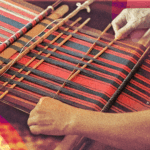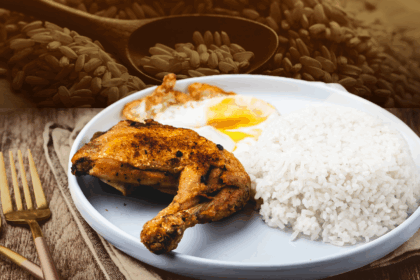For a country whose blood runs through Christian veins, the heart of crossdressing in the Philippines has been beating for generations.
Filipino drag started very early, from the Babaylans in the Pre-colonial era, to the unfortunate stories of comfort-gays during the Japanese Colonization, until the “Paper Dolls”—it has been a long way ever since.
Now, in 2025, the rise of modern drag culture in the Philippines has been undeniable.
Drag is an art form wherein a person (usually male) dresses in exaggerated makeup and avant-garde clothing as performative entertainment. A drag show may even include stunts, dances, and lip-syncs; moreover, drag shows are also used as a form of self-expression and celebration of the LGBTQIA+ Community.
She who won the race
On August 17, 2022, the first episode of Drag Race Philippines (DRPH) franchise aired; since then, the windows of opportunity for local drag queens in the Philippines have continuously opened one by one.
After losing the maiden season of DRPH, Marina Summers, first runner-up of Season 1, continued to take the spotlight at the international franchise of RuPaul’s Drag Race (RPDR): UK VS The World (UKVSTW) Season 2. The Filipino drag queen was able to succeed until the finals but unfortunately lost in the first round of the finale lip syncs.
Though Marina lost, there is a victory far more valuable than any other triumph she won: to be seen.
It isn’t every day that the international stage gets to listen to a Filipino’s story, which is why Marina made the most out of it. During her UKVSTW stint, she has portrayed the stories of Filipino culture. From a Katipunera-inspired terno by Jude Macasinag to a Yakan wedding look from Basilan, and even a Cordilleran farmer tribute—each runway served more than glamour.
“I meant it when I said I wanted to represent the entire country,” Marina said.
Her symbolic Filipino drag isn’t just beautiful—it’s powerful, political, and proudly rooted in heritage.
A winner’s den
Deja’s victory on Drag Den Philippines Season 2 was not only about proving her talent but also her resourcefulness and deep connection to her roots. Hailing from Baguio City and Pangasinan, Deja’s journey into drag began in Grade 8, inspired by YouTube performances and school lip-sync battles. Despite financial constraints, she and her friends performed in their homes, using makeshift props and costumes.
Her passion and perseverance led her to audition for Drag Den, where she showcased her talent and determination. “Maybe the universe saw my dedication and gave me this opportunity,” she reflected.
Throughout the competition, Deja’s fashion choices were a reflection of her cultural heritage and personal experiences. In the premiere episode, she wore a terno-inspired ensemble that blended traditional Filipino elements with modern streetwear, earning praise for her innovative approach. Her runway looks often incorporated local textiles and motifs, paying homage to her roots and highlighting the rich culture of the Philippines.
Deja’s journey was not without its challenges. She revealed that she had to raise money before agreeing to participate in the show.
“The money I used only came from what I earned while doing drag shows in Baguio,” she shared. Despite these limitations, she and her fellow contestants supported each other, sharing costumes and accessories to enhance their performances.
As the new Drag Supreme, Deja aims to organize drag shows in provincial areas to promote and revitalize the drag scene outside the capital. She encourages aspiring queens to pursue their dreams, stating, “What you plant, you will harvest,” highlighting the importance of persistence and belief in oneself.
Weapon and mirror
Today, the influence of drag on Philippine fashion can’t be ignored. What used to be dismissed as “costume” or “pang-entertainment lang” has reshaped conversations in design, identity, and expression. Theatricality has entered mainstream fashion by slaying designs. And more importantly, providing stories that have meanings; journeys that very well accessorize the wearer.
So now, designers are looking to drag as both muse and movement—bold silhouettes, native textiles, maximalist storytelling, all in one runway look. The drag stage has become a testing ground for risk, reinvention, and cultural reawakening.
In 2024, several Filipino designers, including Neric Beltran and Jude Macasinag, credited drag queens for pushing local fashion forward—not just in terms of aesthetics, but in how Filipino identity can be embodied, celebrated, and even politicized through the fabric.
“Drag becomes an even stronger form of transgression. It is probably one of the most important and revolutionary art forms of our time.” Macasinag noted as he reflected on the importance of his collaboration with Marina.
So when a queen walks out in a reimagined barong or indigenous beadwork, she’s not just serving a look. She’s reclaiming space. She’s rewriting history. And she’s asking the question: Why shouldn’t this be fashion?
From local barangays to international runways, drag is reshaping the way fashion is expressed and experienced.








